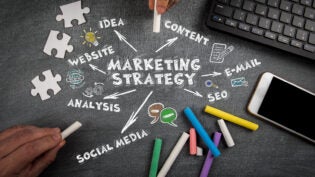
A while back, we focused a series on the channels too critical for you to ignore in 2019 and one of those channels was webinars. We covered the basics then but now I want to get into the mechanics of executing a webinar well, so when you’ve got your content ready, you get the biggest bang for the buck.
When I’m talking about a webinar, I am not talking about a one-on-one web-based demonstration or sales meeting. I’m talking about an event you would promote to a larger audience, and the event itself is intended to be a group experience.
Webinars are a smart tactic if you want to:
- Educate prospects or customers
- Field objections and questions in a live environment
- Demonstrate aspects of your product or service in an interactive way
- Establish your thought leadership or authority on a topic
- Capture sales leads
Note that drive sales is not on that list. A webinar is not a hard-driving sales tool. It’s higher up in the funnel and serves more of a marketing function. That doesn’t mean you won’t garner sales from the webinar. But it shouldn’t be your focus. Webinars are successful if they’re helpful, if people connect to the presenter and feel like they walked away with knowledge or insights that are valuable.
Here are some mechanics to consider as you think through your webinar strategy:
Tools: There are many good webinar tools out there, and the right one for you will depend on price, number of attendees possible, the ability to record and other factors. This guide may help you decide.
Promotion: Webinars are not a “build it and they will come” sort of thing. You need to get the word out and issue multiple invitations. Give yourself at least a 30-day window for promotion. If you already have a list of prospects, that’s a smart place to start. You’ll get your biggest flurry of sign-ups about ten days before the event. If you make a big deal out of the fact that they’ll get access to a recording of the webinar whether they attend or not—you’ll get more takers.
Leave behind: I think of my PPT deck as a leave behind when I am working on a webinar. I’m always going to offer it to the attendees at the end, so I build it with that in mind. Unlike a deck for a speech, where I might have a single image and no words, I use a lot of bullets and text for my webinar decks. I know I am in essence taking notes for the attendees, so my slides are a little denser in content.
Format: As you think about constructing your webinar, explore easy to grasp “packages” for the information you want to share. Like:
- Five mistakes to avoid
- Ten questions to ask before…
- Four unexpected benefits of…
This style of formatting will help you tease and promote the content. It will also help you avoid trying to pack too much information into the webinar. It lends itself to a strong wrap up for you as a presenter and gives your attendees something to grab hold of and remember.
No matter how or when you deliver your webinar, be sure you know what you want to happen once you sign off. Do they get a “thanks for attending” email? Do they get a link to deeper content on one of your key points? Don’t lose the momentum. When the webinar wraps, it’s not the end, it’s the beginning.












